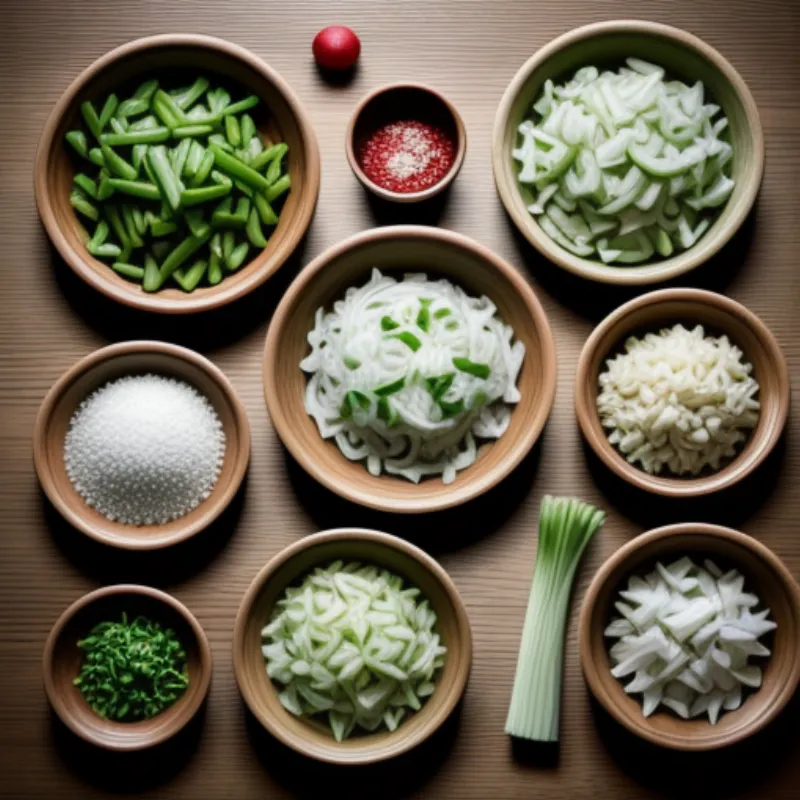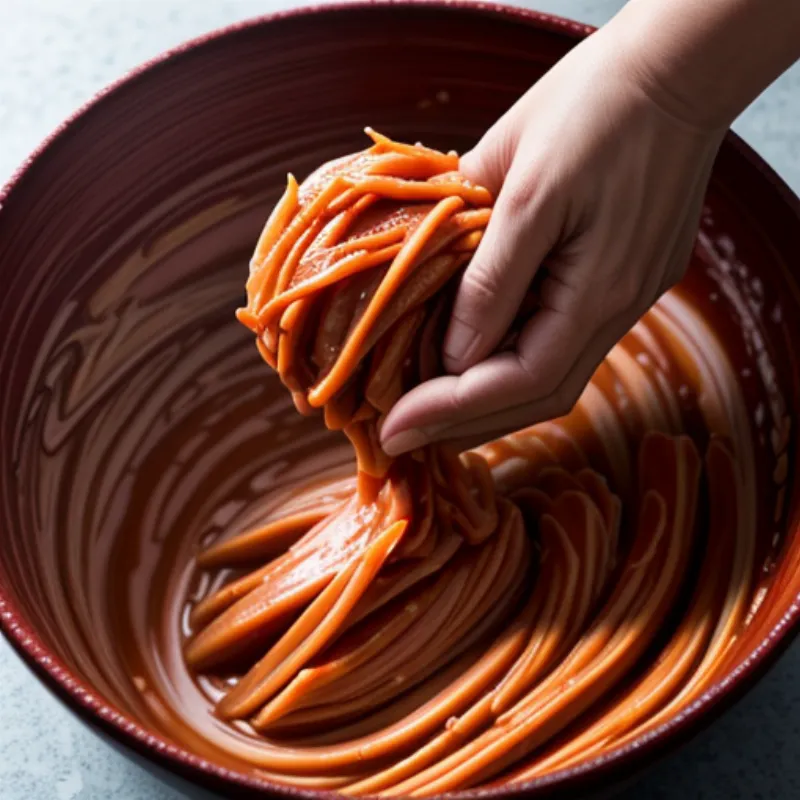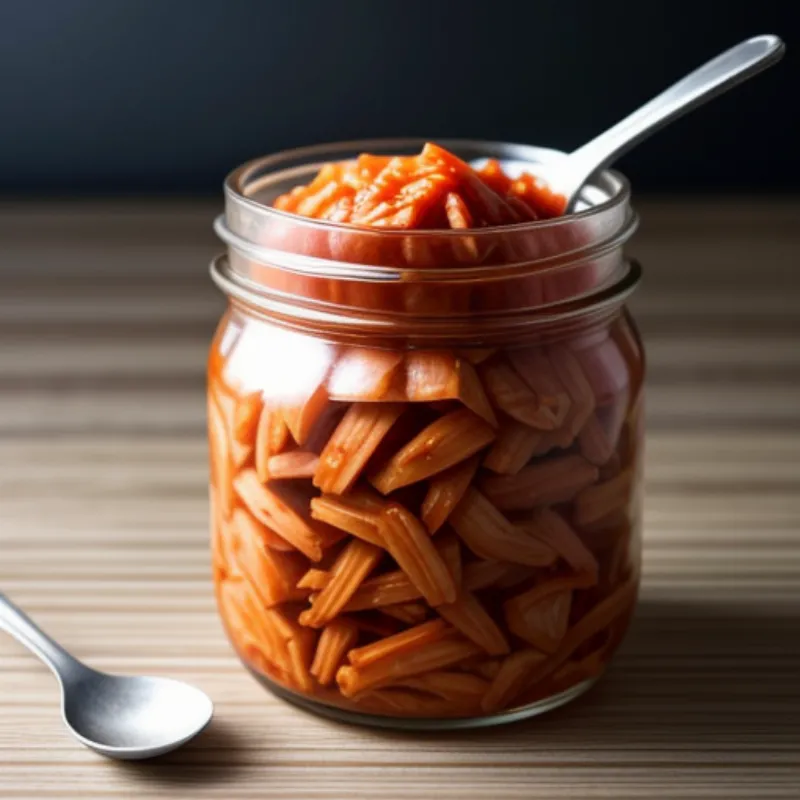Kimchi, a staple in Korean cuisine, is a vibrant and flavorful fermented cabbage dish that has gained worldwide popularity. With its signature spicy kick and tangy depth, kimchi is not only delicious but also incredibly good for your gut health. Making kimchi at home might seem daunting, but with this easy-to-follow guide, you’ll be fermenting like a pro in no time. Let’s dive in and discover the magic of homemade kimchi!
What You’ll Need to Make Authentic Kimchi
Ingredients:
- 1 large Napa cabbage (about 2 pounds)
- 1/4 cup sea salt (for salting the cabbage)
- 4 cups water (for the brine)
- 1/4 cup gochugaru (Korean chili pepper flakes) – adjust to your spice preference
- 2 tablespoons fish sauce (for umami – can substitute with soy sauce for a vegetarian option)
- 1 tablespoon grated ginger
- 2 cloves garlic, minced
- 1 medium onion, finely chopped
- 2 green onions, chopped
- 1-2 tablespoons sugar (optional, for taste)
Equipment:
- Large bowl
- Colander
- Jar or container for fermenting (glass or ceramic work best)
 Ingredients for Kimchi
Ingredients for Kimchi
Step-by-Step Guide to Making Kimchi at Home
1. Prep the Cabbage
- Remove any wilted outer leaves from the Napa cabbage.
- Cut the cabbage lengthwise into quarters.
- Cut each quarter crosswise into 2-inch pieces.
- Place the chopped cabbage in a large bowl.
2. Salt the Cabbage
- Sprinkle the sea salt evenly over the cabbage, ensuring it gets in between the leaves.
- Gently massage the cabbage with your hands for a few minutes to help it wilt and release moisture.
- Add the 4 cups of water to the bowl. The cabbage should be submerged in the brine.
- Weigh the cabbage down with a plate or a heavy object to keep it submerged.
- Let it sit for at least 2 hours, or up to overnight. The longer it sits, the more flavor it will develop.
3. Make the Kimchi Paste
- Combine the gochugaru, fish sauce, ginger, garlic, onion, green onions, and sugar (if using) in a blender or food processor.
- Blend until it forms a smooth paste. If the paste is too thick, add a tablespoon of water at a time until you reach your desired consistency.
4. Combine the Cabbage and Paste
- Rinse the salted cabbage thoroughly under cold water 2-3 times to remove excess salt.
- Squeeze out any excess water from the cabbage.
- Add the kimchi paste to the cabbage and mix well using your hands (wear gloves if you prefer). Make sure the cabbage is evenly coated.
 Mixing Kimchi Paste
Mixing Kimchi Paste
5. Ferment Your Kimchi
- Pack the kimchi tightly into a clean glass or ceramic jar, leaving about an inch of space at the top. Press down firmly to eliminate air pockets.
- Seal the jar tightly and leave it at room temperature for 1-5 days for fermentation. The warmer the temperature, the faster it will ferment.
- Check your kimchi daily for bubbles and a slightly sour aroma, which indicate fermentation.
- Taste it along the way! You can decide when it reaches your desired level of tanginess.
6. Store and Enjoy
- Once your kimchi has reached your desired level of fermentation, store it in the refrigerator to slow down the process. It will continue to ferment slowly in the fridge, developing a more intense flavor over time.
- Kimchi can be enjoyed as a side dish, added to soups and stews, used as a topping for rice and noodles, or incorporated into countless other delicious recipes.
Tips for Making the Best Kimchi
- Adjust the spice level to your liking. Start with less gochugaru if you’re sensitive to spice, and add more to taste.
- Experiment with different vegetables. Radishes, carrots, and cucumbers can be added to your kimchi for added flavor and texture.
- Use filtered water for a cleaner taste. Chlorine in tap water can sometimes hinder the fermentation process.
- Be patient! Fermentation takes time, and the flavor of your kimchi will continue to develop over time. Don’t be afraid to experiment and find what works best for your taste.
FAQs about Making Kimchi
Q: Can I use regular salt instead of sea salt?
A: While you can use regular table salt, sea salt is preferred as it contains natural minerals that can enhance the flavor of your kimchi.
Q: How long does kimchi last in the fridge?
A: Kimchi can last for several months in the refrigerator, but it’s best consumed within a few weeks for optimal flavor and texture.
Q: What should I do if my kimchi gets too sour?
A: If your kimchi gets too sour for your liking, you can use it in cooked dishes like kimchi jjigae (kimchi stew) or kimchi fried rice. The cooking process will mellow out the sourness.
Explore the World of Kimchi
Making kimchi is a rewarding experience that allows you to connect with a rich culinary tradition and enjoy the incredible taste of this fermented delicacy. So go ahead, gather your ingredients, and embark on your kimchi-making adventure! And if you’re looking for creative ways to use your homemade kimchi, be sure to check out our recipes for Kimchi Fried Rice and Kimchi Quesadillas!
 Jar of Kimchi
Jar of Kimchi
